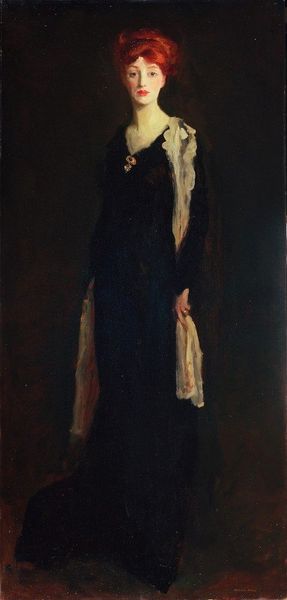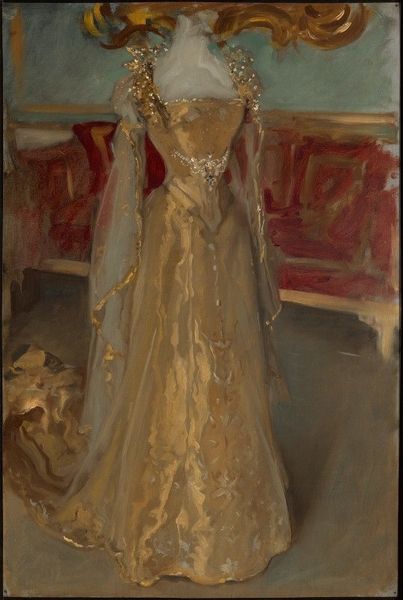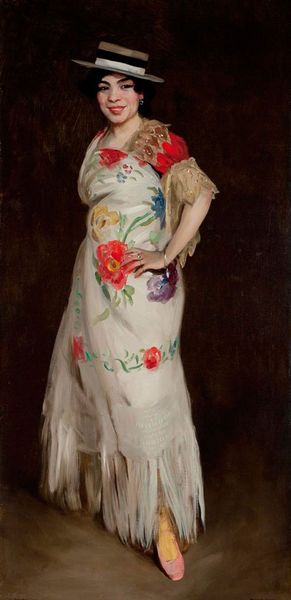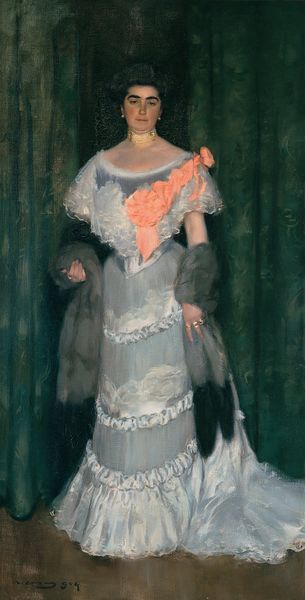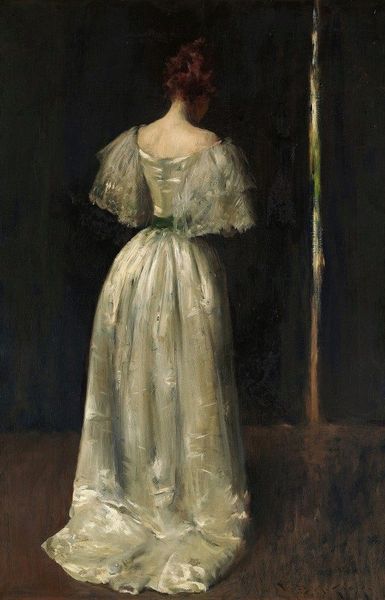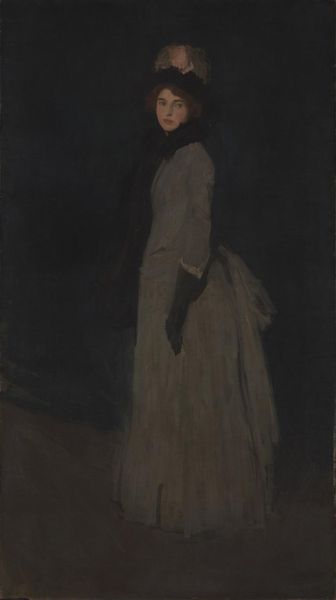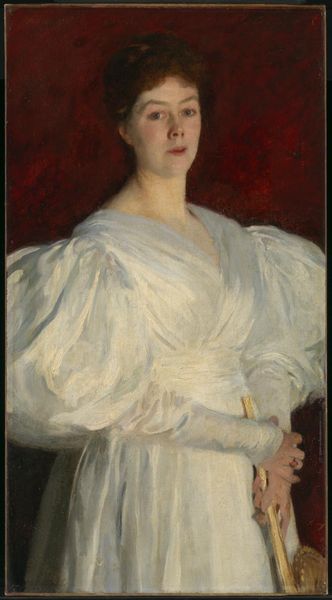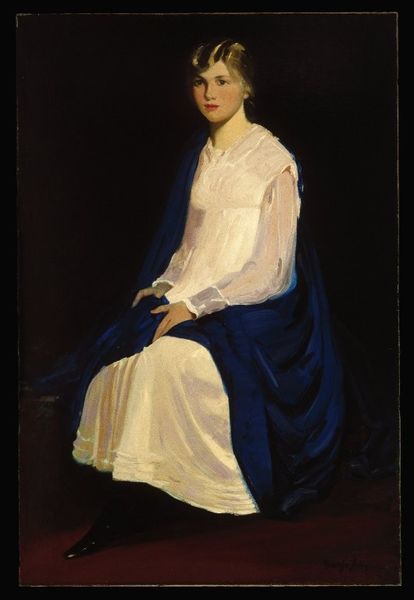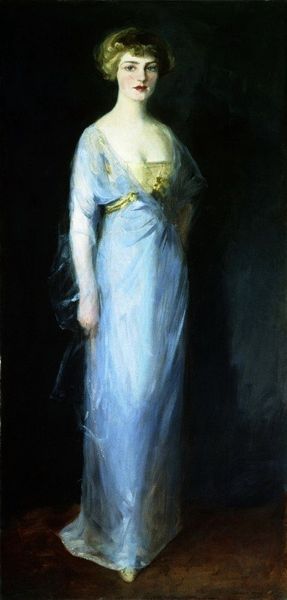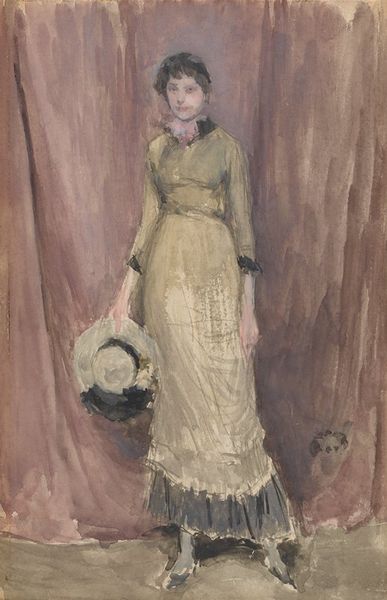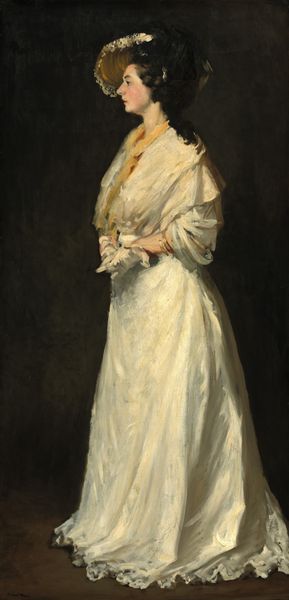
Copyright: Public domain
Curator: This is Robert Henri's "The Masquerade Dress," painted in 1911 using oil paints. Editor: It’s arresting. There’s a haunting quality to her direct gaze, and that pale yellow dress seems to glow against the darker backdrop. It feels romantic, almost ghostly. Curator: Indeed. Henri was quite interested in capturing the spirit of his sitters, often portraying them in these kind of posed, theatrical moments. Notice how the costume becomes almost as important as the person. Dresses during this period weren't merely fabric, they were signifiers. Editor: Absolutely. Look at the detail. You can see how the paint is applied in broad strokes, really emphasizing the textures and weight of the fabric. That golden trim at the top and around the arms really pulls the eye and speaks to its precious nature. Curator: And think about the context. Masquerades were social events steeped in symbolic ritual. By entitling it "The Masquerade Dress," Henri is hinting at a narrative, a performance of identity. Who is she pretending to be? Editor: It also forces us to question the labor and materials involved. Someone designed this dress, sewed it, embroidered it—layers of craft consumed for an evening of illusion. Curator: Precisely. The figure, particularly the costumes, become powerful signs with embedded historical and cultural meanings. Editor: I keep thinking about the consumption, the sheer material investment into presenting oneself in this particular way. What does it say about value in the Edwardian period? Curator: A lovely painting to unpack how garments hold meaning. The symbols tell a silent narrative. Editor: Exactly! A quiet and thought-provoking commentary on class and craft. I’m left wondering what sort of work was behind this artwork as well!
Comments
No comments
Be the first to comment and join the conversation on the ultimate creative platform.
